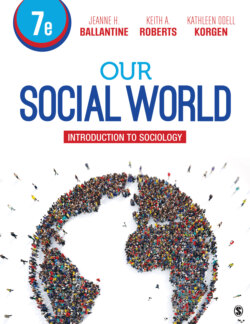Читать книгу Our Social World - Kathleen Odell Korgen - Страница 128
На сайте Литреса книга снята с продажи.
Material Culture: The Artifacts of Life.
ОглавлениеMaterial culture includes all the human-made objects we can see or touch, all the artifacts of a group of people—grindstones for grinding cassava root, microwave ovens for cooking, bricks of mud or clay for building shelters, hides or woven cloth for making clothing, books or computers for conveying information, tools for reshaping environments, vessels for carrying and sharing food, and weapons for dominating and subduing others.
Some material culture is from the local community; it is of micro-level origin. The kinds of materials with which homes are constructed and the materials used for clothing often reflect the geography and resources of the local area. Houses are an especially good example of material culture, because they result from local ideas of what a “home” looks like and shape the interactions and attitudes of people in the society. Likewise, types of jewelry, pottery, musical instruments, or clothing reflect tastes that emerge at the micro and meso levels of family, community, and subculture. At a more macro level, national and international corporations interested in making profits work hard to establish trends in fashion and style that may cross continents and oceans.
▲ Homes are good examples of material culture. Their construction is influenced not only by local materials but also by ideas of what a home should be. Homes shape the context in which family members interact, so they can influence the nonmaterial culture—including beliefs, values, and symbols. Houses, like clothes, act as symbols that communicate levels of prestige.
Keith Roberts
Material culture helps drive the globalization process. Workers in Asia and Central American countries now make many of our clothes. Our shoes may come from the Philippines. The last banana you ate probably grew in Costa Rica, Guatemala, Honduras, or Panama. That romantic diamond engagement ring—a symbol that represents the most intimate tie—may well be imported from a South African mine using low-paid or even slave labor. Our cars consist of parts produced on nearly every continent.
Thinking Sociologically
Think of examples of material culture that you use daily: stove, automobile, cell phone, computer, refrigerator, clock, money, and so forth. How do these material objects influence your way of life and the way you interact with others? How would your behavior be different if one of these material objects, say iPhones or money, did not exist?
